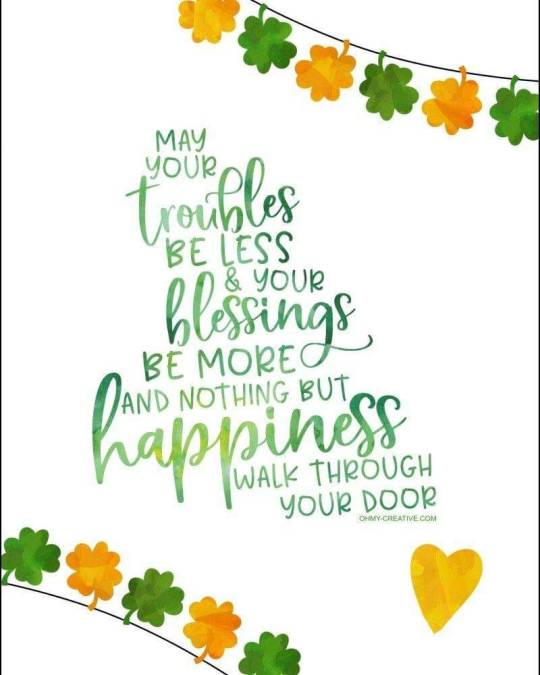#Irish American
Text
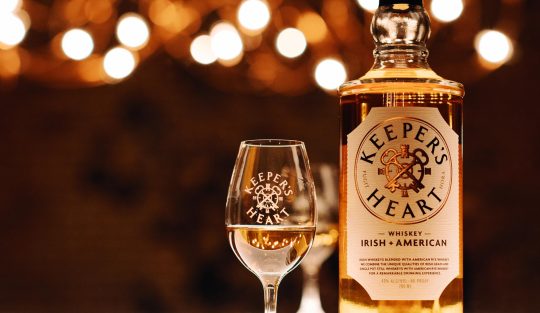
It's one of my new favorites!
107 notes
·
View notes
Text
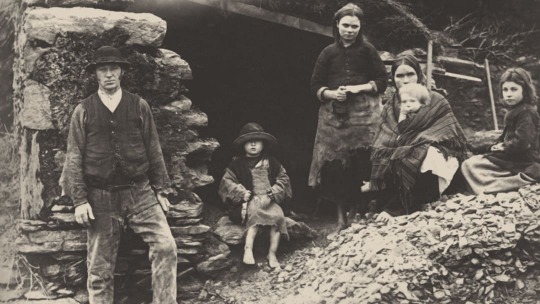
It's that time of year when you are going to see some "Irish" t-shirts in stores and can get your Shamrock Shake at Mickey D's. There will be St. Patrick's Day parades this weekend and next.
And I just want to be a nerdy know-it-all for a second. St Patrick's Day was originally a religious holiday (as most holidays were, holy + day = holiday); it still is in some places, like some actual Irish people from Ireland who believe in God--though the American parade/festival mentality seems to be gaining steam in some parts of Ireland, I am told.
St Patrick's Day as we know it is deeply rooted in the United States. Though it's been celebrated here since 1600 in the territory that became Florida, the tenor of the holiday greatly changed after the Great Famine of Ireland.
You may have been told in school that the famine occurred because a blight wiped out potato crops in Ireland. This is true but doesn't address the crux of the matter.
The blight started in North America and travelled to Ireland and into much of Europe. But we only think of it as an Irish problem because the Irish were too poor to eat other foods.
Some scholars have said it was a "man made crisis" and I agree that is true. Other crops in Ireland were not affected by the blight, in fact, this time was considered one of "plenty", but all that food was used to feed the English. Not the Irish.
Nor were the English quick on providing aid, "There is such a tendency to exaggeration and inaccuracy in Irish reports that delay in acting on them is always desirable," said Prime Minister Sir Robert Peel after initial reports of the catastrophe.
Workhouses designed to assist the poor and starving were closed prematurely. "The only way to prevent the people from becoming habitually dependent on Government is to bring the food depots to a close," said Charles Trevelyan, the man who was literally in charge of famine relief. He also said some gems like, Sure the famine is bad but "the moral evil of the selfish, perverse and turbulent character of the people" was the real problem. Great guy; he became a Baronet.
The soup kitchens, which replaced the workhouses were also closed prematurely, were widely believed to serve portions too small even for children and lacking any nutritional value due to them being watered down to feed more people than anticipated by the brilliant British government.
A million people died in Ireland from famine and disease and nearly 2 million left Ireland for other parts of the world. Including my father's family. (If they survived the "Coffin Ships" leaving their home.)
So when I said above that the tenor of the holiday changed, it was because of increasing Irish Nationalism and anger at Britain. Now, Ireland is a Republic (though it's not unified, yet) and we are proud of those who stayed and fought to make that happen.
We are also proud just to still be alive anywhere. The population of Ireland is 6.9 million now--slowly nearing the 8.5 million it was home to before the famine--but people with Irish ancestry across the world has been measured to be about 80 million people. Take that, Sir Robert Peel.
The English actively tried to kill us. Nevertheless, we persisted. A lot.
I hope you have a Happy St. Paddy's Day (it's Paddy not Patty). Drink some Guinness. Dance some jigs. Definitely eat some potatoes (Boil 'em! Mash 'em! Stick 'em in a stew!) But please remember that when people are starving, you should feed them. Don't be like the English government.
In fact, as I write this there is a crisis in Turkey and Syria. It just so happens that the Sultan of Turkey wanted to donate money to Ireland (10,000 pounds) but since Queen Victoria donated just 2,000, he was told it would be against protocol.
#st patricks day#saint patrick#ireland#irish american#the great famine#irish potato famine#st paddys day#turkey#turkey earthquake#syria earthquake#immigration#sir robert peel#england#queen victoria#Charles Trevelyan#republic of ireland#nothern ireland
192 notes
·
View notes
Text
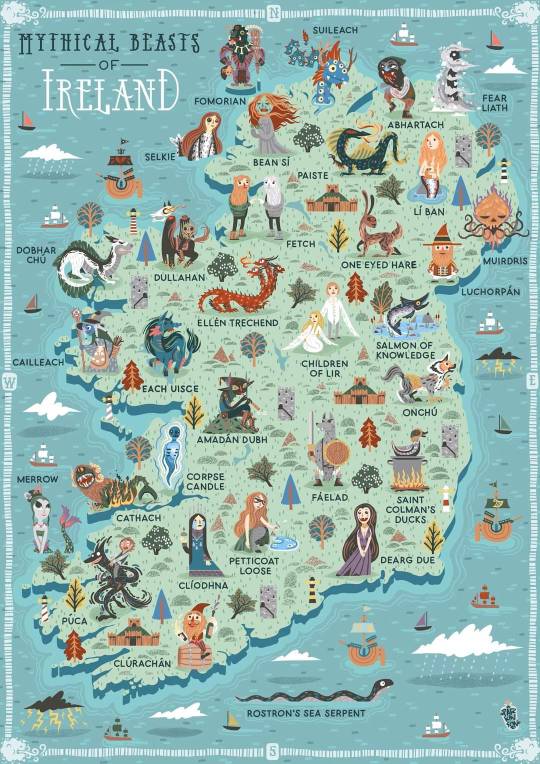
“Mythical Beasts of Ireland” by Neil Parkinson.
According to family lore, my great-grandmother (born and raised in Roscommon, moved to Providence at 19 to marry a man twice her age) had a dullahan living in her basement (not really doing anything or bothering anyone, which is weird because mortally bothering is what a dullahan does, it didn't follow her when her house burned down though and that was essentially that). There was also a family banshee that announced any deaths (and still does with some accuracy by all accounts--the family has a habit of dying on January 4th that, impressively, some 21 have held to over the last two hundred years--unhelpfully, I've only confirmed 13 in the last 150, but one of my aunts says I'm low by at least 7).
Sorry for all the parenthetical thoughts.
#neil parkinson#folklore#irish folklore#cryptids#dullahan#bean sí#irish studies#maps#family stories#banshees#irish american#saint patrick's day#grave goods
20 notes
·
View notes
Text
I was thinking about how allot of legends of Saint Patrick are basically him demonstrating that the Christian god is more powerful than local pagan deities to get converts and it made me think of like anime community power scalers and it made me think of these memes to create as hypothetical memes in early Middle Ages Irish social media:
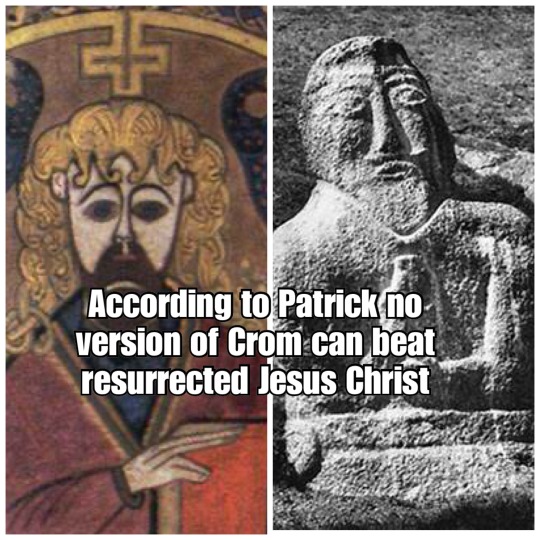

I apologize if there’s anything wrong with the Irish language one colonialism did a number on it even in Ireland so it didn’t exactly survive in the diaspora for me so I used google translate 😅
#shut up alex#personal#celtic#irish american#irish#ireland#saint patrick’s day#saint patrick#history#history memes#irish history#irish history memes#irish culture#gaelic#celtic history#my memes#homemade memes#original memes
33 notes
·
View notes
Text
youtube
#irish american#great famine#great hunger#history#biden#israel's war crimes#israel is a terrorist state#Youtube
23 notes
·
View notes
Text
“This is not the land of my birth, but it is the land for which I hold the greatest affection.” - President John F. Kennedy🤍🇮🇪
Jack in Ireland, June 1963💚
#jfk#john f kennedy#john fitzgerald kennedy#jack kennedy#the kennedys#kennedy family#america#1960s#john f. kennedy#president kennedy#irish american#ireland
77 notes
·
View notes
Text

99 notes
·
View notes
Photo

Above all else, deep in my soul, I'm a tough Irishwoman.
- Maureen O’Hara
Maureen O’Hara was born in 1920, in Ranelagh, Dublin, and went on to become a screen legend in Hollywood. Dubbed the Queen of Technicolor, the stunning Irish beauty starred in such classic films as The Quiet Man, How Green Was My Valley, Miracle on 34th Street, and The Parent Trap. In 2020, she was ranked number one on The Irish Times list of Ireland's greatest film actors.
#o'hara#maureen o'hara#quote#irish american#ireland#actress#hollywood#glamour#arts#film#movies#golden age of hollywood
107 notes
·
View notes
Text
I know this may not make sense to a lot of people but:
Irish > Irish Americans
But
Italian Americans > Italians
I will not elaborate
269 notes
·
View notes
Note
Wait. Since when weren’t Irish people considered white?
Good question, totally real anon and not a self-ask created because the previous post wouldn’t make sense if I just added articles on anti-Irish sentiment there.
Like I said in those tags, Irish people weren’t considered, “white,” until recent years. When Irish immigrants came in the 1840s and 1850s—mostly due to the potato famine in the latter half of the former decade—they were portrayed as ape-like, brutish—sound familiar?—and invading an already established culture that has been living here for a long time now—ironically.
They were Catholics in a, “Protestant nation,” who didn’t speak English. And people were worried that they were going to replace the President with the Pope—I wish I were joking—and replace secular law with religious doctrine—again, ironically. Not to mention, they didn’t want the Irish immigrants to come for their women and bring their criminal activity to this nation.
How did they, “become,” white? By participating in the oppression they once suffered from, and turn it on Black people. Only then were they considered white by their fellow Americans. Hell, it was heavily rumored that Irish immigrants were also enslaved—and some Irish descendants still believe in said rumor. Thankfully, that wasn’t the case, but I don’t blame them for believing it, considering how poorly Irish immigrants were treated when they first came to America. (plus, Irish immigrants were made to be indentured servants back in the 17th Century… hardly any difference between that and slavery, only you consent to it via contract, and therefore not considered property.) Unfortunately, this rumor, nowadays, comes at the expense of the Black Lives Matter movement, in an attempt to still be seen as, “white.”
Sources:
When Irish Immigrants Weren’t Considered White
When the Irish Weren’t White
Let’s Squash the Myth That the Irish Were Ever American Slaves
90 notes
·
View notes
Text
I had some thoughts about Leida Mothma turning toward conservatism and fascism. I think this detail in her character is less about her spiting her mother and more about being lonely and wanting a sense of community and a sense of belonging. Ultimately, I think it is an interesting observation or commentary on traditionalism among diasporas as a means to embrace community and identity.
(Now, I think it's important to note that this is coming from someone who is, technically, a part of the Irish diaspora even though adoption largely severed that cultural or communal connection.)
There's a rather sharp observation that the Irish have made regarding the Irish diaspora in America, essentially calling out the many bootlickers in the community. "Irish Republican" in Ireland refers to someone who supports Irish sovereignty while "Irish Republican" in the United States refers to a cop. I have spoken before in my personal life about how neither the Irish or Irish-Americans are ready to hear that the Irish diaspora inherited their ideological tradition from their Irish ancestors. Much of their conservatism is based in Catholicism, but because much of their Irishness has been compromised for whiteness, this Catholic tradition is no longer being used to empower and educate Irish people, but prop-up white supremacy. As a whole, they are anti-abortion, anti-LGBTQ+, anti-contraception, pro- "traditional" families, and pro-caste. And there's a lot ot be said about how Christian ideologies, which obviously center a martyr in their beliefs, contribute to an identity of self-victimization.
Many of these families began coming to the Americas at a time when their expulsion from The UK played a part in English colonization. The religious caste system in Ireland that forbade Irish Catholics from voting or holding land encouraged them to leave and go uphold the racial caste system in the Americas, which forbade black people from land and voting and bodily autonomy (among many things). Most of this diaspora would go on to assimilate to the hegemonic Anglo culture in the US despite the tyranny their ancestors experienced under the Anglos, and many historians attribute this to their material success. But it is precisely this history of being mistreated and oppressed under the Penal Codes and English colonization that persists in Irish-American identity just as it persists in Irish identity. This history of living under colonial tyranny inspired the Irish (in Ireland) to fight back as the political and social conditions of their country changed and progressed. However, in America this identity became the justification for normalizing other's suffering ("The Irish were slaves too"). This identity born out of struggle reinforced a blood-and-soil sense of nationalism in the US. Because their identity is tied to this idea that they struggled (so you should too) under tyranny, many of them are also very pro-gun in a country that alone experiences mass shootings every day.
When surrounded by a hegemonic culture that seeks to be the dominant singular culture (like Anglo-Evangelical Christianity in the US), immigrating ethnic groups do two of several things: they assimilate, which is the ultimate goal of the hegemonic culture, or they cling as tightly to their traditions and practices and customs as a means of maintaining a sense of community while literally surrounded by a culture that is trying to erase your identity.
The first action, "assimilation," helps contribute to a white identity through the erasure of ethnic and cultural pluralism, as well as a unified sense of community. That erasure might be through genocide and the elimination of a people, their community, their cultural sites, or their traditions (like we see on Aldhani). Alternatively, it can be seen through the sterilization and defangment of pluralistic cultural or ethnic identities as they're folded under an umbrella of "whiteness" (this process is encouraged by the fact that these groups achieve more material success by upholding whiteness and defending the system).
The second action, embracing specific ethnic traditions, can contribute to a social lack of change within a diaspora. It's like taking a snapshot of a people in time. They're constantly at risk of losing their sense of community and ethnic identity to the pressure of assimilation, so they hold on as tightly as they can to what is left of this identity and community. Meanwhile, back in the old country where there isn't this threat of assimilation under a hegemonic culture, the social landscape changes and progresses without fear of erasure of identity. This is not me saying that there is never push-back in these communities from conservatives who believe that people are "losing their way" or that community and identity would be stronger by embracing tradition, this is me saying that this embrace of conservatism is seen as necessary to any social survival among a diaspora. A diaspora is going to, as a whole, feel under threat of "losing their way" or feel like their community or identity in their little enclave would be stronger by embracing tradition.
Yielding in acceptance.
Safe in the braid of the old ways
True and Steady and braided in trust
The old ways hold us.
Safe in the knot; in the binding
The old ways teach us
Bound against the wind; tied to shore
Teathered in permenance
It goes without saying that this embrace of traditionalism, from traditional social dynamics to traditional social or cultural ritual, can also play a part in encouraging a blood-and-soil nationalism. Traditional rituals can also contribute to the cult of the nation seen under fascist regimes. The creation of rituals evoke belief in a higher cause, something critical to fascist "political religions." Fascist regimes choose ideology over competency every time. And it is for this reason that they rely on ideology for survival. What perpetuates these systems is simply belief in the cause because many of them cannot campaign on competency, effectiveness, or even a process (like an election process or a standardized bureaucratic process). Their legitimacy depends on ideology and that is why the evocation of faith in something higher is critical to the perpetuation and justification of these oppressive ideologies.
So, what does this have to do with Leida? Well, there is a Chandrilian diaspora (of sorts) on Coruscant. And it is experiencing a sort-of embrace of or return to tradition among it's youth.
It has been mentioned several times in the show how different things are "back home" on Chandrila, from how they've changed and how they are more progressive to how they are less sympathetic to the Empire. Traditional dress, traditional food, and especially traditional marriage customs are all mentioned as being far more popular among Chandrilans on Coruscant (and there seem to be a good few families) than Chandrilans on Chandrila. Hell, even the decor at the Mothma residence is dated.
It was Leida who sought out the elder and Mon even reports that Leida and her friends are enjoying it. It's the only things she shows up on time for. These rituals are a measure of community and identity for Leida, providing her with a sense of belonging to an in-group. Leida is profoundly isolated and ignored by both her parents. She is lonely and looking for community at an age when identity formation is at a critical stage of development and a sense of belonging is incredibly important.
Leida is surrounded on all sides by forces that make her feel small: her parents, a fascistic empire, and being a teenager. She wants a sense of importance and a sense of mattering to someone or something at a time in her life when that is incredibly important. The prospect of marriage provides her a romanticized notion of "mattering" to someone while the ritual provides her a notion of mattering to or bing a part of something higher or bigger than the self. She has run to traditionalism for a sense of identity and community. She has run to a traditional ritual for the sense that she matters and she is part of something bigger (the "old ways"). And it is a ritual that additionally teaches children the value of "yielding," too.
At a time of insecurity in her life-- first because she's 14, second because it looks like her family or parent's marriage is falling apart, and third because her parents seem to want nothing to do with her-- something that promises safety, order, community, and permanence is going to be very appealing. Those ideals are also going to go far in legitimizing the Empire's fascist ideology in Leida's mind. The Empire and traditionalism have become synonymous with security, order, community, and a sense of belonging and purpose.
80 notes
·
View notes
Photo
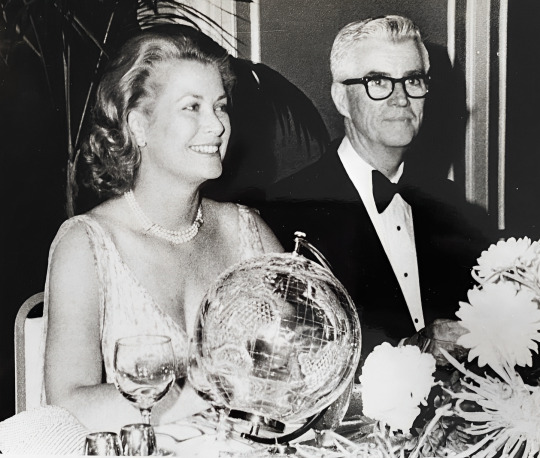
Princess Grace of Monaco at a dinner in her honour in recognition of her contribution to Irish cultural development at St. Paul, Minnesota, on July 28, 1978 .
At right is Dr. Eoin McKiernan, president of the Irish American Cultural Institute. In the foreground is the Waterford Crystal Globe that Princess Grace was to present to one of the guest.
#grace kelly#princess grace#eoin#mckiernan#irish american#heritage#roots#irish american cultural institute#1978#dior#cartier
26 notes
·
View notes
Text
...turns out that was only the first part of the Irish prime minister's declaration. I have deleted my previous posts about the tweet, im sorry. I'm just trying to be a good ally and I am sorry if I stumble. As an Irish amercian with jewish roots I feel so strongly about this.

I hope she gets home safe☹️
#ireland#i was goimg to repost more stuff until i saw someone post this#irish people#irish prime minister#irish American#irish jew#the irish
7 notes
·
View notes
Text
From Ireland to Irish Americans, help Palestinians:
youtube
#palestine#palestinians#usa#us taxpayers#ireland#famine#irish american#gaza genocide#gaza#holy land#solidarity#free palestine#free gaza#starvation#end genocide#israeli apartheid#israeli occupation#idf terrorists#iof terrorism#war crimes#icj#icc#netanyahu the madman#benjamin netanyahu#right wing extremism#racism#justice#feed the hungry#stop starvation#united nations
4 notes
·
View notes
Text
Happy St. Patrick’s Day ☘️

3 notes
·
View notes
